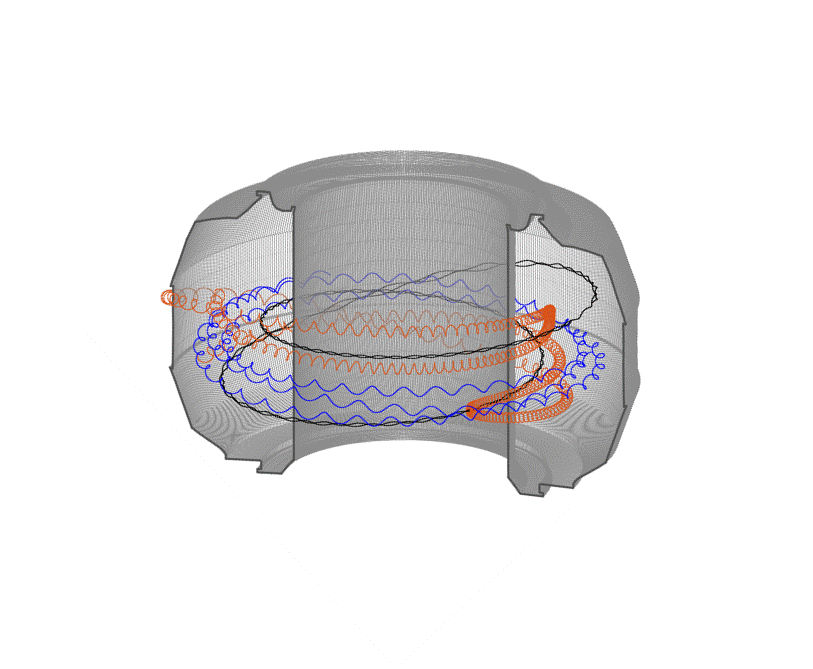
Filter News
Area of Research
- Advanced Manufacturing (1)
- Biology and Environment (8)
- Clean Energy (9)
- Energy Frontier Research Centers (1)
- Fusion and Fission (22)
- Fusion Energy (13)
- Materials (47)
- Materials for Computing (7)
- National Security (2)
- Neutron Science (11)
- Nuclear Science and Technology (12)
- Quantum information Science (1)
- Supercomputing (12)
News Topics
- (-) Fusion (55)
- (-) Molten Salt (8)
- (-) Nanotechnology (60)
- 3-D Printing/Advanced Manufacturing (125)
- Advanced Reactors (34)
- Artificial Intelligence (95)
- Big Data (58)
- Bioenergy (92)
- Biology (100)
- Biomedical (59)
- Biotechnology (23)
- Buildings (59)
- Chemical Sciences (69)
- Clean Water (30)
- Climate Change (103)
- Composites (29)
- Computer Science (194)
- Coronavirus (46)
- Critical Materials (29)
- Cybersecurity (35)
- Decarbonization (81)
- Education (4)
- Element Discovery (1)
- Emergency (2)
- Energy Storage (111)
- Environment (198)
- Exascale Computing (39)
- Fossil Energy (6)
- Frontier (44)
- Grid (65)
- High-Performance Computing (88)
- Hydropower (11)
- Irradiation (3)
- Isotopes (54)
- ITER (7)
- Machine Learning (48)
- Materials (145)
- Materials Science (144)
- Mathematics (9)
- Mercury (12)
- Microelectronics (4)
- Microscopy (51)
- National Security (68)
- Net Zero (14)
- Neutron Science (133)
- Nuclear Energy (110)
- Partnerships (49)
- Physics (63)
- Polymers (33)
- Quantum Computing (35)
- Quantum Science (70)
- Renewable Energy (2)
- Security (24)
- Simulation (49)
- Software (1)
- Space Exploration (25)
- Statistics (3)
- Summit (59)
- Sustainable Energy (129)
- Transformational Challenge Reactor (7)
- Transportation (97)
Media Contacts

An Oak Ridge National Laboratory–led team has learned how to engineer tiny pores embellished with distinct edge structures inside atomically-thin two-dimensional, or 2D, crystals. The 2D crystals are envisioned as stackable building blocks for ultrathin electronics and other advance...

Fusion scientists from Oak Ridge National Laboratory are studying the behavior of high-energy electrons when the plasma that generates nuclear fusion energy suddenly cools during a magnetic disruption. Fusion energy is created when hydrogen isotopes are heated to millions of degrees...

Oak Ridge National Laboratory has developed a salt purification lab to study the viability of using liquid salt that contains lithium fluoride and beryllium fluoride, known as FLiBe, to cool molten salt reactors, or MSRs. Multiple American companies developing advanced reactor technol...

Thanks in large part to developing and operating a facility for testing molten salt reactor (MSR) technologies, nuclear experts at the Energy Department’s Oak Ridge National Laboratory (ORNL) are now tackling the next generation of another type of clean energy—concentrating ...

It may take a village to raise a child, according to the old proverb, but it takes an entire team of highly trained scientists and engineers to install and operate a state-of-the-art, exceptionally complex ion microprobe. Just ask Julie Smith, a nuclear security scientist at the Depa...

A scientific team led by the Department of Energy’s Oak Ridge National Laboratory has found a new way to take the local temperature of a material from an area about a billionth of a meter wide, or approximately 100,000 times thinner than a human hair. This discove...

Nuclear physicists are using the nation’s most powerful supercomputer, Titan, at the Oak Ridge Leadership Computing Facility to study particle interactions important to energy production in the Sun and stars and to propel the search for new physics discoveries Direct calculatio...

Material surfaces and interfaces may appear flat and void of texture to the naked eye, but a view from the nanoscale reveals an intricate tapestry of atomic patterns that control the reactions between the material and its environment. Electron microscopy allows researchers to probe...

The same fusion reactions that power the sun also occur inside a tokamak, a device that uses magnetic fields to confine and control plasmas of 100-plus million degrees. Under extreme temperatures and pressure, hydrogen atoms can fuse together, creating new helium atoms and simulta...

When it’s up and running, the ITER fusion reactor will be very big and very hot, with more than 800 cubic meters of hydrogen plasma reaching 170 million degrees centigrade. The systems that fuel and control it, on the other hand, will be small and very cold. Pellets of frozen gas will be shot int...


